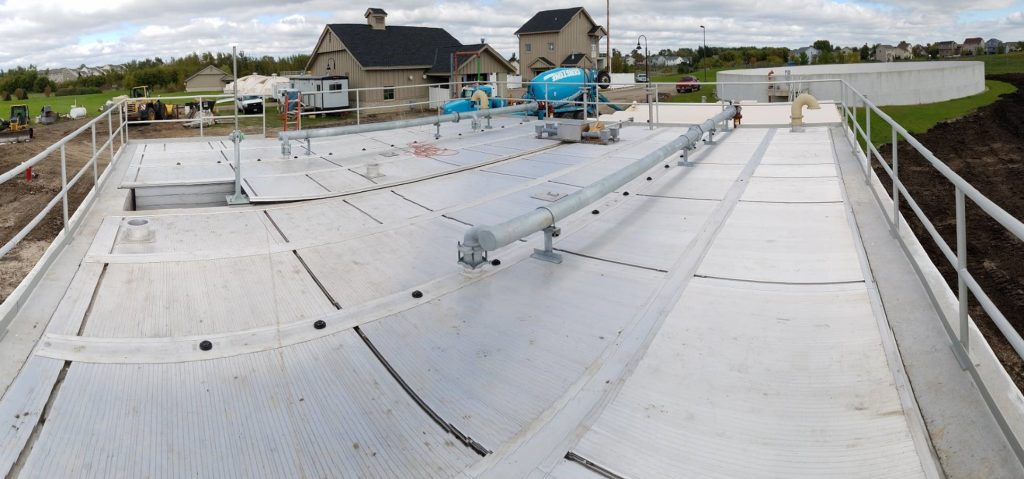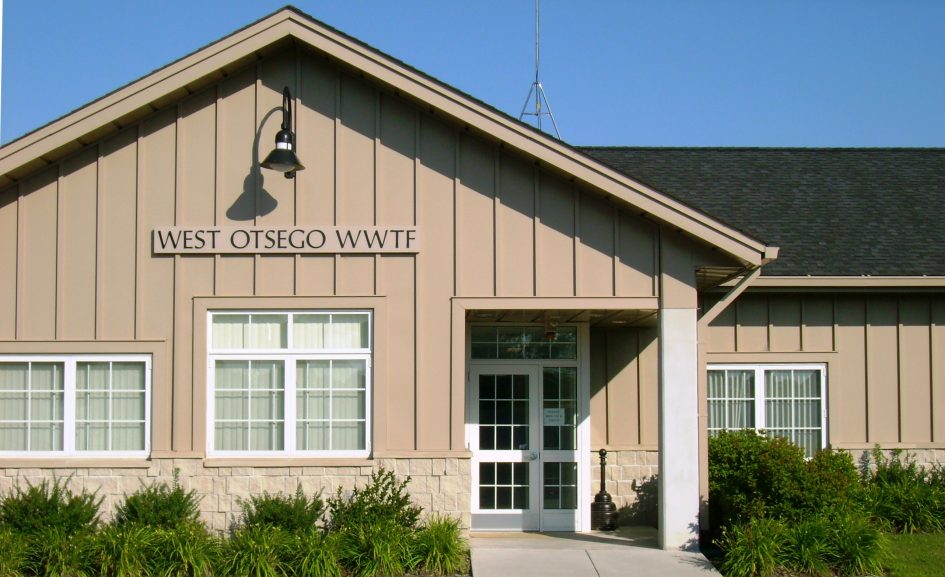A couple years ago, operators at the Otsego, Minnesota Wastewater Treatment Facility (WWTF) on the west side of town frequently found themselves on the receiving end of odor complaints due to underperforming aerobic digesters. At the time, the solids treatment train capacity did not match the capacity of the liquid treatment trains, so the City was forced to temporarily reduce solids loading to the aerobic digesters by hauling undigested solids to other facilities in the area. Hauling the solids had an impact on the City’s WWTF operating costs, due to the trucking and tipping fees.
The original construction of the West WWTF included aerobic digestion of waste activated sludge (WAS), but with a common design inadequacy of aeration and mixing capacity for the “thin” WAS and volume for the “thick” WAS. The resulting digestion operational capacity was inadequate for the solids loading of the WWTF, which began to produce odors. Unfortunately, there was as little as 75-yards of separation between homes and the digestion system, and neighbors were apt to notice the odors.
The City of Otsego selected AE2S (Advanced Engineering and Environmental Services, Inc.) to determine a solution for its wastewater challenges. “We started out by conducting an analysis of the various treatment alternatives. We considered autothermal aerobic digestion, dewatering with lime stabilization, aerobic digestion with specialized “thick” WAS aeration/mixing diffusers, as well as aerobic digestion with jet aeration,” says Scott Schaefer, AE2S Wastewater Practice Leader.
The alternatives were narrowed down to compare the two contenders most economically viable for this specific situation – aerobic digestion with aeration/mixing diffusers (drop pipe diffusers and shear tubes) versus aerobic digestion with jet aeration. Both options could be implemented without additional building space.
Each alternative was evaluated based on:
- capital, operations and maintenance, & net present worth costs;
- adequate successful installations;
- experience in relevant applications;
- and the advantages and disadvantages of each.
Based on the results of the analysis, it was determined that the alternative involving diffusers with shear tube alternative was the most economical option. As a result, AE2S recommended the City of Otsego proceed with the design. The Operations Team and Council confirmed the recommendation, and AE2S proceeded with design.
The West WWTF Digester Expansion design began in 2015 with bidding, construction, and start-up in 2016. The completed expansion project includes a thickened aerobic digestion process with a specialized aeration/mixing system designed for thickened WAS applications. An “insurance” odor control system was also added. A pH-driven aeration approach was utilized that was so successful at the West WWTF, that additional instrumentation and programming was incorporated by AE2S at the City’s East WWTF to bring the controls approach to both the City’s aerobic digestion systems to improve control of seasonal variation in nitrification-denitrification process reactions while also reducing energy costs.

Otego, MN West Wastewater Treatment Facility (WWTF)
Over the past three years, Otsego also completed an oxidation ditch capacity expansion at the East WWTF in 2016, completed digester blower improvements at the East WWTF in 2018, and prepared a Wastewater Master Plan in 2018.
“We developed a Wastewater Master Plan that addressed short-term needs for reinvestment while setting future direction, so we can move forward with projects knowing we will be making the right long-term investments,” says Kurt Neidermeier, Otsego Utilities Manager.
Neidermeier says since the startup of the West WWTF, there has not been an odor complaint. As for the future, AE2S is beginning the design of Otsego’s East Biosolids Facility this year, with construction planned for 2020.

